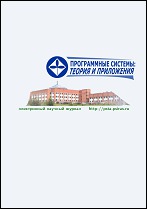|
|
Program Systems: Theory and Applications, 2014, Volume 5, Issue 1, Pages 15–36
(Mi ps106)
|
 |
|
 |
This article is cited in 2 scientific papers (total in 2 papers)
Hardware, software and distributed supercomputer systems
Supercomputers, memory hierarchy and dataflow computation model
A. V. Klimov, N. N. Levchenko, A. S. Okunev, A. L. Stempkovsky
Institute for Design Problems in Microelectronics of Russian Academy of Sciences
Abstract:
Modern supercomputers are hierarchical, and the hierarchy depth tends to grow. Structure hierarchy (core–chip–node–card–cabinet–system) implies significant differences in communication time. Memory hierarchy also induces differences in access time: the larger is the size of the level, the slower is the access. Data movement overhead become the most significant factor of inefficiency, and thus the task of optimizing programs in this respect gets more and more difficult. We claim that these difficulties are largely a consequence of traditional programming paradigm that goes back to von Neumann. And although it has such a strong case as the acquirements and the legacy software, it is still useful at least in theory to understand the alternatives. We believe that the problem of the von Neumann programming model arises due to its exercising the so-called gather paradigm, as opposed to the scatter paradigm inherent to the proposed dataflow computation model, which provides more efficient and easier solution to the data movement optimization problem.
Key words and phrases:
supercomputer, memory hierarchy, data prefetching, dataflow computation model, gather paradigm, scatter paradigm, computation scheduling.
Citation:
A. V. Klimov, N. N. Levchenko, A. S. Okunev, A. L. Stempkovsky, “Supercomputers, memory hierarchy and dataflow computation model”, Program Systems: Theory and Applications, 5:1 (2014), 15–36
Linking options:
https://www.mathnet.ru/eng/ps106 https://www.mathnet.ru/eng/ps/v5/i1/p15
|

| Statistics & downloads: |
| Abstract page: | 391 | | Full-text PDF : | 164 | | References: | 56 |
|




 Contact us:
Contact us: Terms of Use
Terms of Use
 Registration to the website
Registration to the website Logotypes
Logotypes








 Citation in format
Citation in format 
